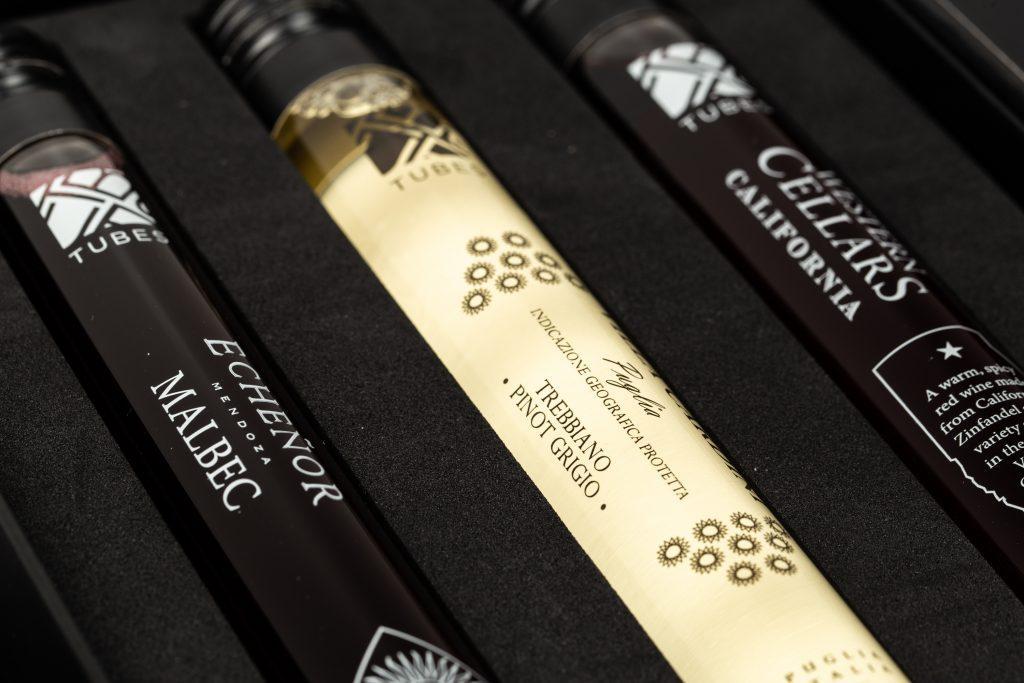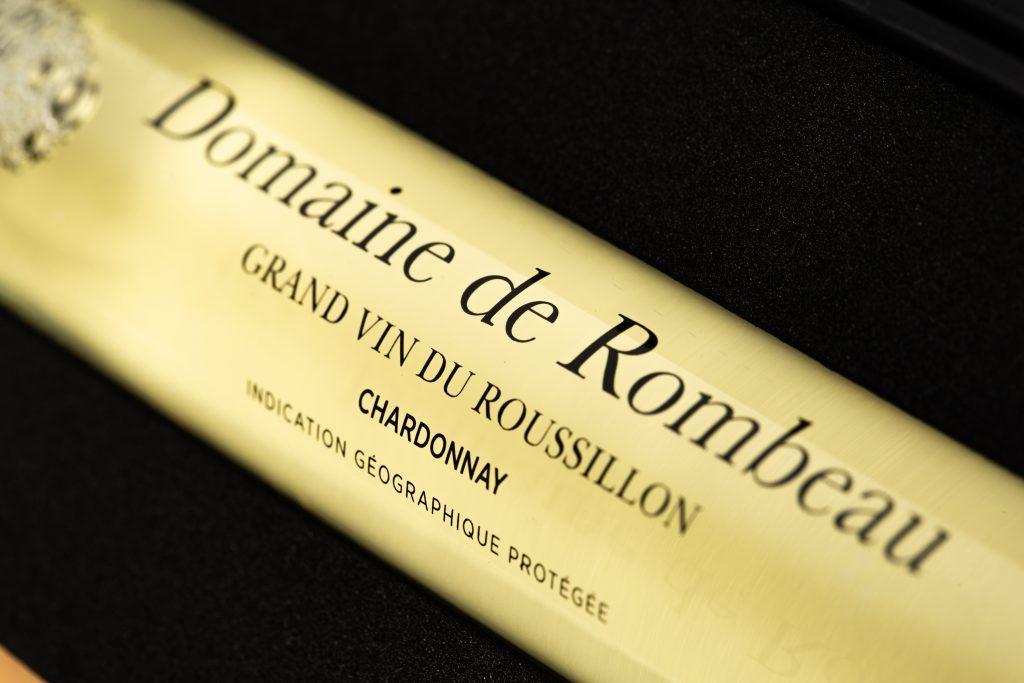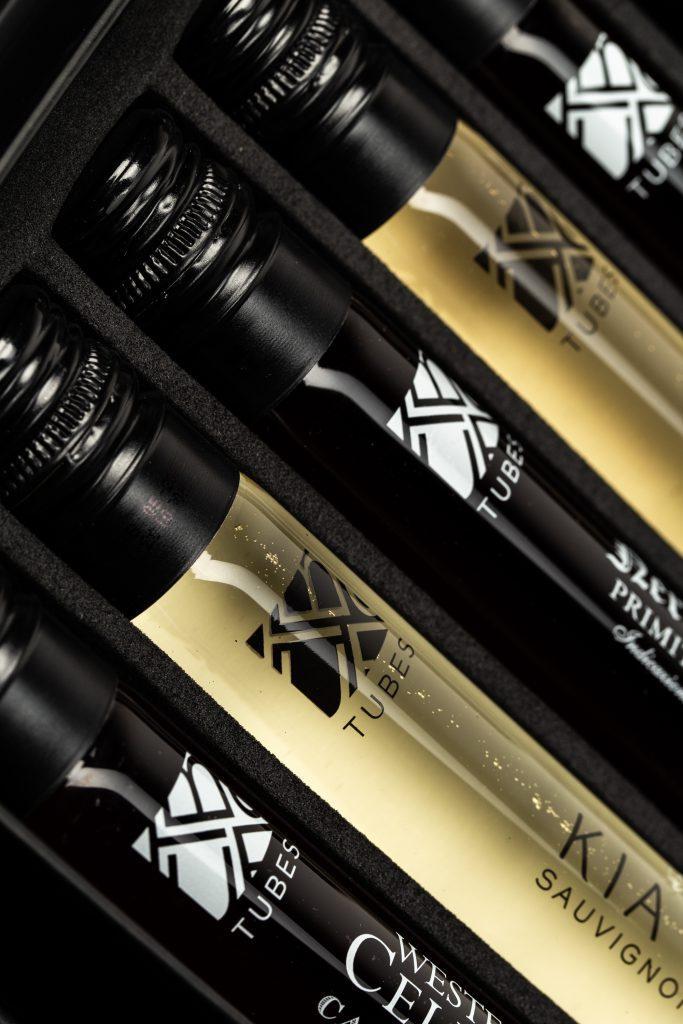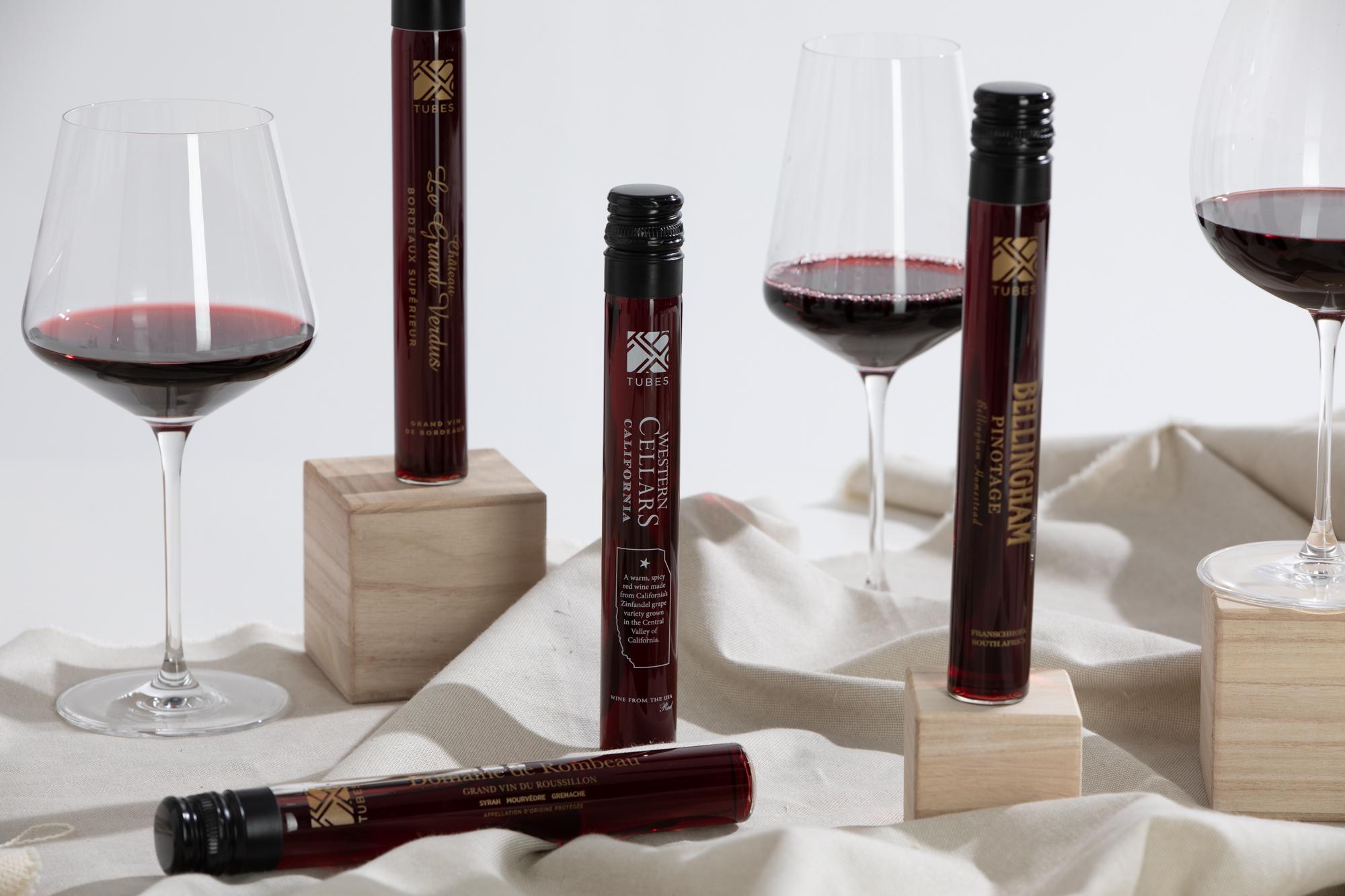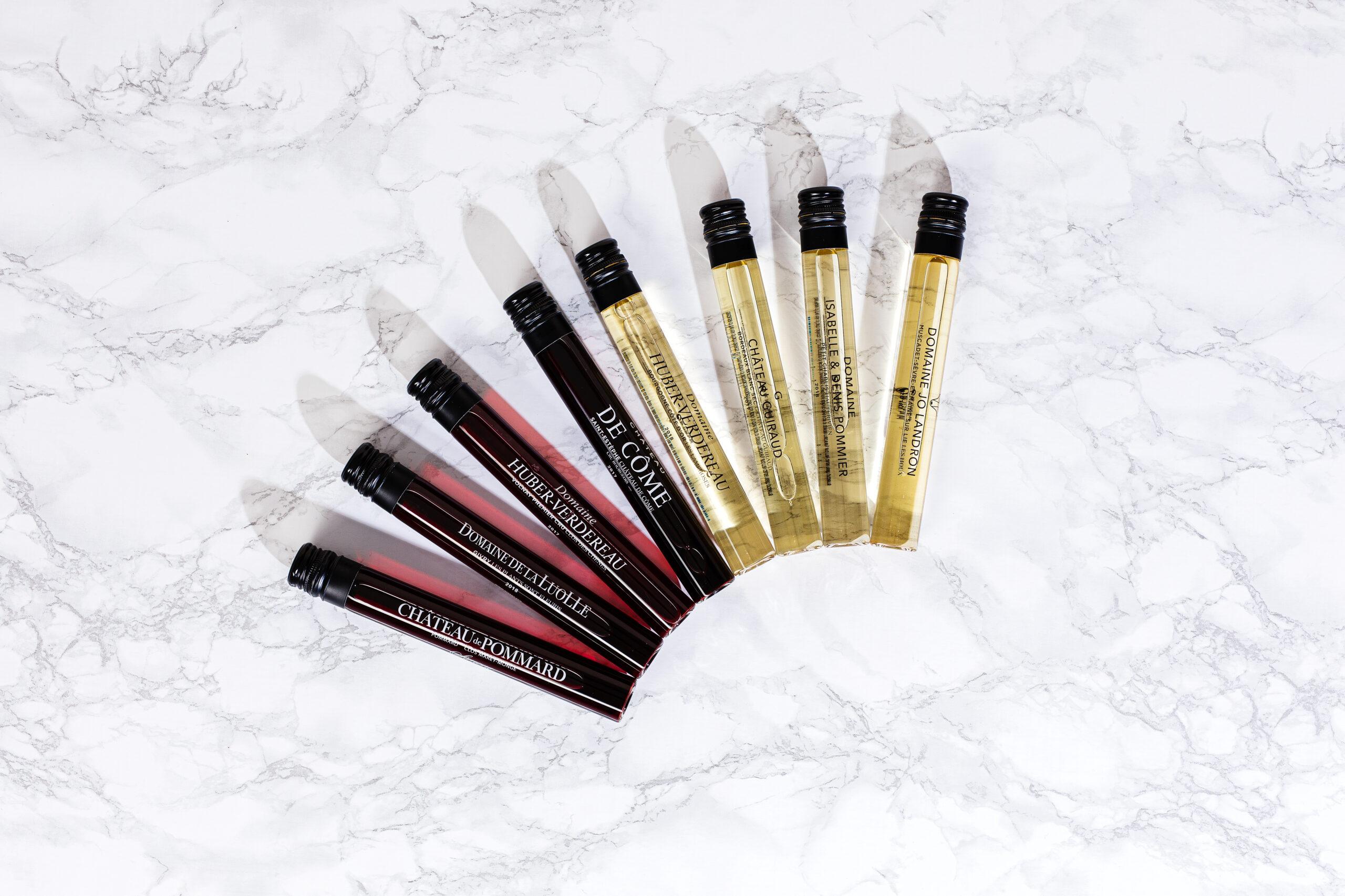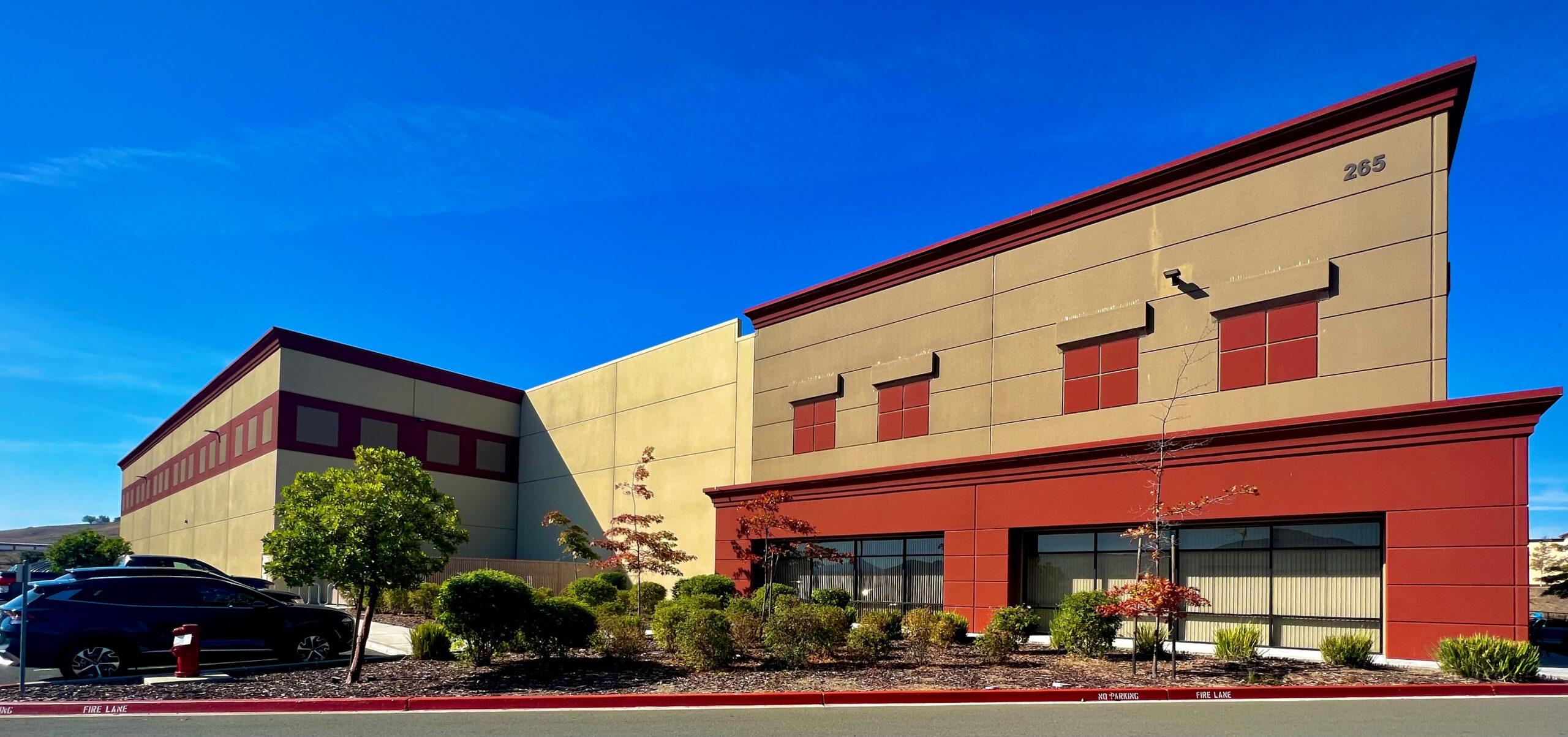Discover
our bottle
your own
samples machine
Discover our bottle
your own samples machine
The evolution of wine bottling
Grapegrower & Winemaker – October 2020 – Issue 681
By Samuel Squire
Grapegrower & Winemaker
In 2007, archaeologists unearthed what may well be the world’s first and oldest winery in Armenia, a winery which dates back to 4100 BC. The archaeologists discovered large, earthenware containers, similar to qvevris, which they believe were used to hold and store wine. They found that these containers may have been in use around 6000 BC.
It’s no secret that wine has made its mark throughout most of human history: from breaking bread over war negotiations to being served at the marriages of kings and queens, wine was there and the ways it has been stored have changed considerably. Traditional storage methods have morphed and advanced over time, as we have. From underground storage containers to barrels, from clay jugs and urns to modern-day glassware. In 3100 BC, the Phoenicians introduced wine to Egypt and used ceramic amphorae to store it. It was only in the third century AD that wooden barrels were used for wine storage by the Romans.
Jumping forward in time, it wasn’t until the 17th century that glass bottles were being used for wine. Although back then, they were short, stout and had short necks – greatly different to modern glass bottles. By the 1820s, glass wine bottles resembled something similar to what the industry uses today. These were the bottles that needed stoppers, of which cork proved to be the best at the time, even if a small trace of oxygen could seep into the bottle through these early closures.
Nowadays, glass is fully recyclable, and that’s a brilliant thing for sustainability. However, in terms of emissions produced in manufacturing and transport, its carbon footprint suggests better alternatives could be the way forward.
Sustainable alternatives
In the UK, Garçon Wines – a wine packaging solutions supplier – is one of a handful of organisations evolving the wine bottle with more sustainable and less environmentally damaging alternatives. It has released its patented eco-friendly, flat bottles which the company says save energy (presumably, in all facets of the wine distribution process), save space and are made from pre-existing and recycled PET plastics, avoiding the single-use cataclysm of environmental damage. In terms of emissions, PET plastic bottles are more energy-efficient to transport, recycle and are considerably less fragile than their glass counterparts.
Understandably, consumers won’t likely find a bottle of Penfolds Grange or Henschke Hill of Grace in a PET bottle any time soon, if at all, but the idea of putting more drinkable, everyday-type wines in this packaging has merit. Less CO₂ emissions made in production and transport would mean the wine industry could significantly reduce its total environmental impact, something which Garçon Wines CEO Santiago Navarro says is the way forward. Navarro says to put it simply, “our planet and our industry cannot afford for us not to move into sustainable packaging”. It appears the wine industries of the world are making efforts to reduce their overall environmental impacts with sustainable viticulture, organic and biodynamic methods, but why stop there?
A healthier planet with less atmospheric and environmental pollution should be the “triple bottom line” to account for centuries of human-caused planetary damage, according to Navarro. One way Garçon Wines is aiming to aid that mission is by literally reshaping the wine bottle market, in more ways than just the metaphorical sense.
“The need for our design innovation and best-in-class material is global to help our deeply unwell planet, but it particularly lends itself to Australia,” Navarros said, “just like how California is now experiencing some of their worst wildfires in history, at the start of this year Australia experienced firsthand the devastating impact that such wildfire devastation can have, as well as recording the country’s hottest temperatures on record”.
“From a production point of view, Australian wine producers will relate to how the wine industry is at risk from a warming planet which is damaging vines and terroirs across the globe. Navarro discussed that talking about glass, in the age of climate change, as an environmentally friendly solution because of its infinite recyclable lifecycle is misleading information. He says that, even though glass as a base material is infinitely recyclable, the overarching costs – both fiscally and environmentally – ultimately show that there are better and planet-healthier options out there.
A better option than glass
“There is a better option than glass because there are materials that perform like glass but require significantly less energy to produce, move and recycle,” Navarro said. “Energy consumption is directly correlated to carbon footprint and, therefore, environmental impact.
Implying that glass is an environmentally friendly material purely based on its recyclability, without accounting for the energy required to produce or recycle the bottle from glass, is hugely misleading, as it does not take into account the entirety of the product’s lifecycle. “Firstly, glass requires a disproportionally huge amount of energy to produce because of the high temperatures required in the furnace. The resulting heavy bottles require significant energy to move. In fact, one local study by the Australian Wine Research Institute has shown that 68% of the total carbon footprint of wine comes from the glass bottle and transport.
“Another separate Californian study estimates that 29% of the carbon footprint of a wine bottle comes from the glass bottle alone and is the single largest contributor to carbon footprint for wine in this US study. Adding the packaging and transport takes it to 51% of the total carbon footprint, so the majority,” he continues. “Basically, as the glass bottle – its manufacture, movement and recycling – is the single largest contributor to carbon footprint in wine, then this is why there are better options.”
Navarro says Garçon Wines is “advancing the wine bottle into the 21st century” with its new product, which is made only from pre-existing PET materials, yet maintains the industry’s heritage and tradition. “PET, which is what we use, is highly recyclable and much of it [on the planet] is recycled,” he says, “in comparison to glass, PET is a far lighter and energy saving material which significantly slashes carbon emissions”. “Virgin PET bottles generate 77% lower greenhouse gas emissions than glass throughout their lifecycle.
“The benefits of using recycled PET, made from material which is already in circulation, amplifies these savings; it takes 75% less energy to make a bottle from recycled PET instead of virgin and 79% lower CO₂ emissions are generated by using recycled PET compared to virgin. For these reasons, recycled PET is a wonder material when compared to glass.” So, it seems as though – at least to some producers and suppliers – that traditional glass is not the way forward. Given, glass may never fully be expunged from the industry, as premium wines demand it to age well, at least that is according to recent studies.
The only thing that could be hindering PET wine bottles could well be image. However, Navarro says the flat, eco bottle produced by Garçon Wines is garnering great positivity from consumers in the UK and across Europe. He believes that the Australian (and New Zealand) wine industry would welcome this innovative, eco-friendly product with open arms.
“Part of the reason we believe the bottle has been received so positively is because it still resembles the wine bottle shape that consumers know and love, and it retains that emotional connection, so can be proudly placed on the dining table. It is difficult to say the same for other formats like bag-in-box or can,” he said.
“Wines in our bottles have not yet become available to Australian consumers, but we are confident that Australians will respond with the same levels of enthusiasm because of their forward thinking nature and past acceptance of new innovations in wine, like bag-in-box and screwcap.” On the design of the bottle, Navarro said, “Through relevant and effective advancements to the shape and material of the bottle, our wine packaging solutions are more eco-friendly, cost-effective and consumer-pleasing across the supply chain, reshaping the way that wine is packaged, transported, retailed, and consumed”.
“Whilst our eco, flat bottle conforms to the main traditional wine bottle shape, so as to respect the industry’s heritage and tradition, it is actually a flattened version of the well-known wine bottle shape. More specifically, it is a smart cross-section design of the Bordeaux bottle.
Spatially smaller bottles
“This design improvement means the bottles are 40% spatially smaller than their round, glass equivalent and, when comparing dimensions of a standard six bottle wine case, thanks to the large flat surfaces, the bottles pack like books, eliminating almost all the wasted air space resulting from transporting cylindrical vessels. “Our eco, flat bottle is made from 100% recycled PET, pre-existing material not single-use plastic.”
Further evolution of the wine bottle, as part of wider efforts to reduce the environmental impact of glass bottles and reduce CO₂ emissions in production and transportation, is coming from suppliers around the world. Much like the changes that led wine from being kept in barrels to bottles, in the late 1600s, the aim of this era of innovation is to improve the current system. So, if fully-recyclable PET doesn’t fill the eco-friendly void for some producers, then perhaps another British supplier’s option may fit the bill instead.
UK-based Frugalpac has further innovated the wine industry with the release of its paper bottle, which the company says will revolutionise the wine market while helping to simultaneously decarbonise it.
‘Entirely unique’ recycled paperboard bottle
Frugalpac CEO Malcolm Waugh said the ‘Frugal Bottle’, which is made from 94% recycled paperboard with a food grade pouch, is entirely unique and will be a definitive solution for producers wanting to reduce their carbon output. “The Frugal Bottle was designed to help a drinks industry that wants to cut carbon emissions and appeal to a new audience of consumers keen on sustainability,” Waugh said. “An independent life cycle analysis carried out by Intertek found the Frugal Bottle, which is made from recycled paperboard with no chemicals, has a carbon footprint up to six times (84%) lower than a glass bottle and more than a third less than a bottle made from 100% recycled plastic. “Firstly, it is much lighter [than glass]. The Frugal Bottle weighs just 83g, so it is up to five times lighter than a normal glass bottle, making it easier to carry and lighter to transport.
“It is also easy to recycle again. Consumers can simply separate the plastic food-grade pouch from the paper bottle and put them in your respective recycling bins. Or you can put the whole bottle in your paper recycling bin and the liner will be easily separated in the paper re-pulping process.” Waugh maintains that the unconventional nature of the Frugal Bottle is exactly why it will generate market interest, both in the ANZ (Australian and New Zealand) markets and internationally.
He says that garnering interest alone isn’t the reason behind the product’s market success, but that recognition of much needed environmental change is driving producers’ decisions about their own bottling methods. “Since we launched the Frugal Bottle in June, we have been inundated with enquiries from around the world, from brands, bottlers and retailers – including from Australia and New Zealand,” Waugh said, “we know that Australia has been at the forefront of trying to decarbonise the wine industry with more of its wine being transported in bulk to the northern hemisphere and then bottled in country with lighter weight bottles”.
“From the conversations we have had from Australia and around the world, it is clear there’s a huge demand for bottles made from recycled paperboard and with the lowest carbon footprint. “It’s clear […] that there’s great interest in a bottle made from recycled paperboard – [a bottle] that is up to five times lighter than glass, has a carbon footprint up to six times lower and is easy to recycle again.
“This interest has come not only from the wine industry but also from major drinks brands for whiskey, rum and vodka.” The Frugal Bottle is lined with a food-grade pouch which is made from polyethylene metallised polyester laminate.
Waugh says that while this material might be harder to recycle in some waste streams, Frugalpac is actively investigating and testing alternatives to ensure their product can be as recyclable as possible. He also mentioned that the small percentage of virgin material used in the production of the 94% recycled bottle material is sustainably certified. “The food-grade pouch is a polyethylene metallised polyester laminate – the same material used in bag-in-box wines,” he said. “It is recyclable but, like most laminated pouches used in the drinks industry, it is not easily recycled in some waste streams and usually gets incinerated. But once testing is complete, Frugalpac will switch to a pouch made from mono metallised polypropylene which can be recycled more easily.” Lastly, Waugh mentioned that producers could potentially manufacture these bottles in their own facilities with the proper equipment, which would reduce international transportation costs and pollution to effectively zero.
“By buying our Frugal Bottle machines, wine producers or packaging companies would be able to manufacture the bottles on their site and allow them to source their printed paperboard locally, cutting their carbon emissions even further.”
With yet another approach, gain focussing on sustainability, eco-friendliness and recyclability, comes the Dutch packaging supplier TUBES, which manufactures a very unique single serve, recyclable option for beverages.
Alongside efforts to reduce the environmental damage caused by the wine industry, TUBES’s product solution also offers a potential fix to encourage responsible drinking in younger consumers, as well as aiding wine businesses to provide better tasting experiences to consumers.
Single serve wine in a tube
TUBES founder Glen Ritzen says his company produces and distributes single serve wines, non-alcoholic cocktails and spirits by the glass, all packed in “innovative, 100% recyclable glass and rPET tubes, in single serve format (100ml)”. “At the moment, our tubes are 100% recyclable in order to keep our processes as sustainable as possible. Furthermore, our rPET tube is created out of 100% recycled PET material, making them as sustainable as possible.”
Ritzen believes the single-serve format will be a welcome addition to the Australian wine market as it can help boost tasting experiences whilst simultaneously encouraging responsible drinking habits. He adds that innovations like wine-in-tubes are necessary to continue to develop an established industry and bring it further into the 21st century. “Through our ‘by the glass’ concept, we offer the possibility [for consumers] to really explore, taste and experience wine, encourage responsible drinking and at the same time prevent unnecessary costs and waste,” he explained. Ritzen says the single-serve tube solution is versatile across beverage industries and will help the world’s wine industries to reduce their environmental impact and increase their sustainability. He says the tubes are also ideal for upselling new vintages by the glass, reducing marketing expenses per customer, while also saving time and the costs associated with logistics and the weight of full-size bottles.
According to Ritzen, his company is ‘not here to challenge the traditions and norms of the historic wine industry’, but simply aims to add and improve upon these. He added that his company’s innovative product is good for cellar doors and consumers to keep up social distancing measures amid the current pandemic, as tubes are able to effectively split a bottle of wine between seven people without the need to come into contact with others. “In the world of wine it is difficult to innovate,” he says, “we have an innovation based on commercial benefits and added value for several sales channels in the wine industry”. “Based on current trends and our growth, we are confident this packaging format will be widely accepted,” he said.
“Although it is dependent on the occasion of use, as we are not here to replace bottles. We also want to add value for wineries to use our format to increase their sales by the bottle, for example in times like this with COVID-19. We see ourselves as an extra format for the wine category.” “TUBES is active in different industries and, because our product is so versatile in terms of contents, volume and branding, we can cater to a wide range of markets,” he said.
“At the moment, we have success in the gift industry, travel, sampling and retail. The next step is to launch TUBES into direct-to-consumer propositions as well.” Ritzen says TUBES are currently being shipped DtC as part of sampling packs for customers to better experience a full range of a wine producer’s offerings. Ritzen added that TUBES are expected to break into the Asia-Pacific region as soon as 2021. “At the end of this year, you will see our first products in the Australian market in collaboration with a respected and nationwide operating retailer,” he said.
“To make the concept more accessible for other sales channels, like gifts, travel and sampling for wineries, our future strategy is to open a local bottling facility in the Asia-Pacific. “We are currently are exploring the possibilities with several potential partners for this region. Due to COVID, the timing will be delayed, but we will focus on opening by the end of 2021.”
This article was originally published in the October issue of The Australian & New Zealand Grapegrower & Winemaker.
